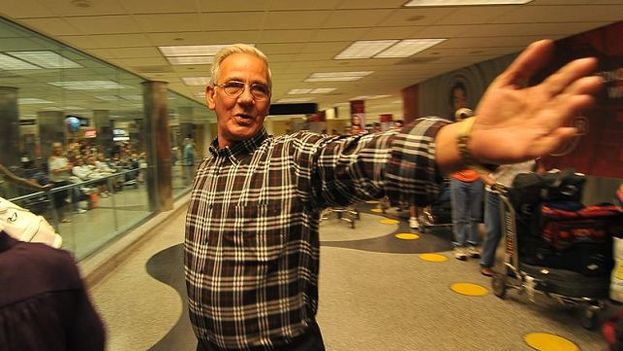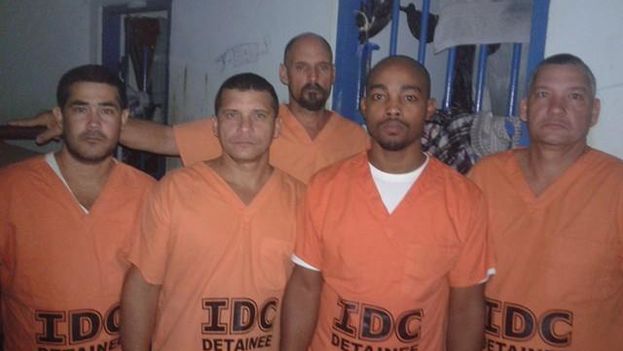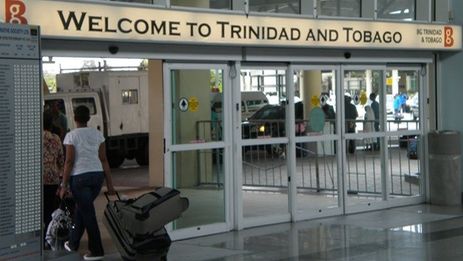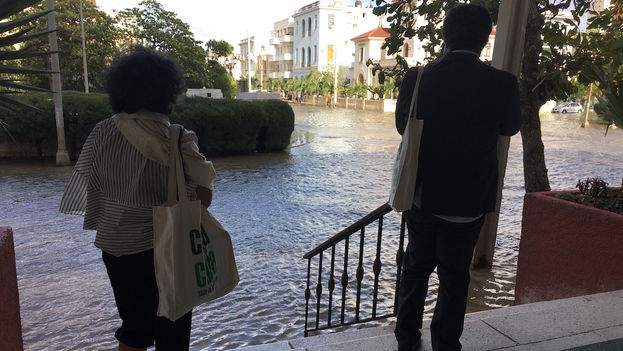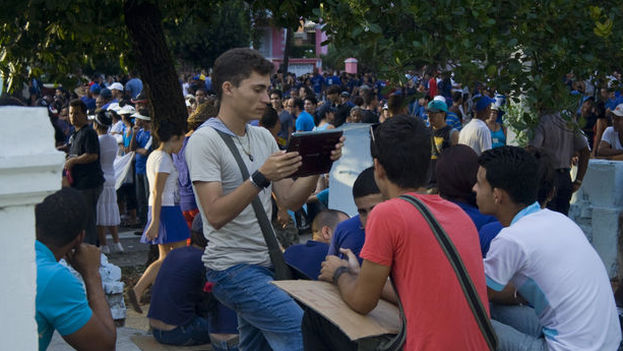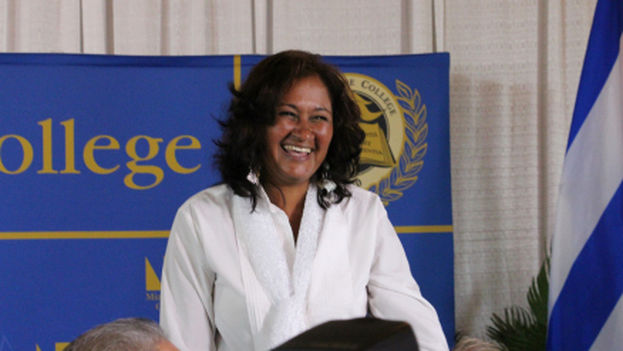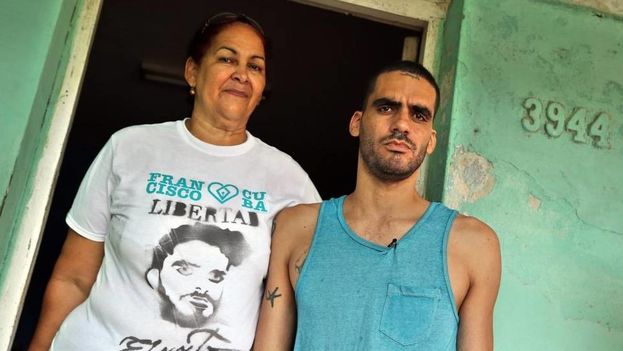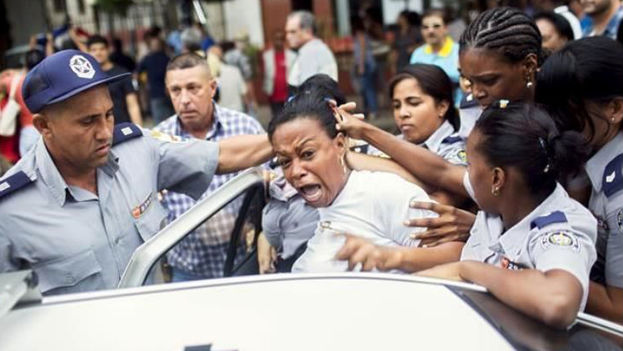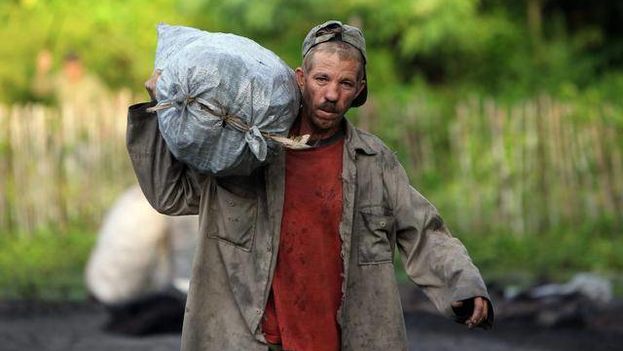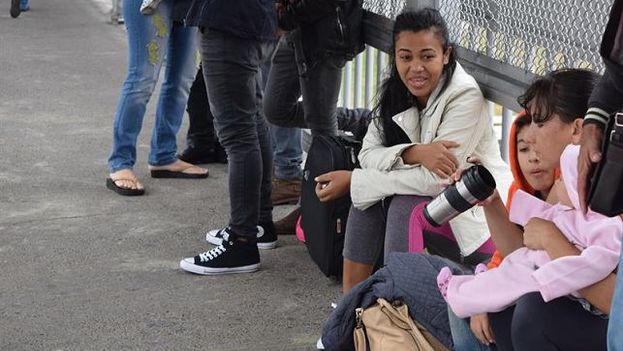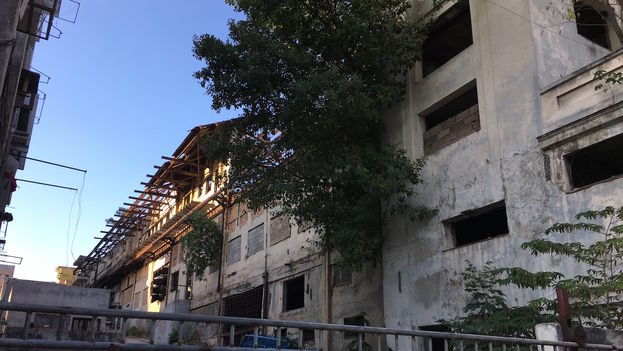El Sexto, the artistic alias of Maldonado, left and reappeared a while later at the side of the Habana Libre Hotel. With a mobile phone, he broadcast live on Faceboo, speaking directly to the screen and mocking Fidel and Raul Castro, recalling dead regime opponents, moving through the desolate streets: “Nobody it outside,” he said. “Rare,” he scoffed. “Nobody wants to talk. But how long will you not want to talk, gentlemen?”
He was an eccentric doing a comic-political show in an empty but guarded theater. The most risky sitcom of the year in Havana
He wore a white Panama hat. Sunglasses hanging from his shirt. Under the right eyelid, tattooed barbed wire. Headphones around his neck. He was an eccentric putting on a comedian-politician show in an empty but guarded theater. The most risky sitcom of the year in Havana. Then he asked some squire, “Papi, where’s my can?”
El Sexto took out a spray can and on a side wall of the Habana Libre, the former Havana Hilton and the hotel where the father of the Cuban revolution had immediately taken possession of to set up his first headquarters after conquering the capital, he scrawled: “He left.”
Live. His face in the picture. Risk level one hundred.
He enjoyed it. He looked at the camera and said, “I see panic in their faces.” Six feet five-and-a-half inches tall, thin, bearded, exultant. A Don Quixote crossing the line.
Hours later, according to the reconstruction of his mother, he was forcibly removed from his apartment by a group of police and locked up in the maximum security prison Combinado del Este, outside Havana, accused of damage to state property. Only this Saturday, two months later, was he released.
“They gave me my identity card and said I would have no problem traveling outside the country,” the artist told 14ymedio a few hours after he was released without charges. “I am in good health and I am very grateful for the solidarity of all those who were aware of my situation.”
During the time he was imprisoned, Amnesty International declared him a prisoner of conscience. A campaign on Change.org collected about 14,000 signatures for his release. Kimberley Motley, an African American lawyer specializing in human rights, traveled to Cuba in December to try to visit him in prison, but was detained and returned to the United States. The vice-president of the German Parliament, the Social Democrat Ulla Schmidt, declared herself his “political godmother.”
This was his second time in prison. In 2015 he spent 10 months locked up for planning a performance art piece with two pigs painted with the names of Fidel and Raul. In his 33 years El Sexto has become a heterodox figure of dissent. More a provocateur than an activist, he is essentially a natural punk, a creative thug who in another country would only have paid a fine for painting a wall, but to whom 21st century Cuba dedicates the punitive treatment it considers appropriate to a threat to the security of the State.
When they released him in 2015, after a hunger strike, El Sexto traveled through different countries and explained in a talk that in the beginning he defined his political stance as that of an artist in response to the official propaganda so abundant on the island: “If they have the right to violate my visual space, I also have the right to violate their visual space,” he maintained.
Years earlier Cuban government proclamations were calling for the return of five Cubans imprisoned in the United States for espionage. They were called The Five Heroes. It was then that Maldonado adopted his nickname “El Sexto” – the Sixth – and emerged as a graffit artist.
“Danilo says that art has to be brave and try to impact people,” explains his girlfriend, Alexandra Martinez, a Cuban-American journalist he met in Miami. She says that El Sexto is a fan of Estopa, a Spanish rock/rumba duo, and Joan Manuel Serrat, a Spanish singer-songwriter. She tells how impressed he was when he went to New York and visited the studio of artist Julian Schnabel, director of Before Night Falls, the film about Reinaldo Arenas, a Cuban poet who died of AIDS in exile, and also the director of Basquiat, about the artist who began is career using the tag SAMO (for Same Old), on his graffiti in the streets of Manhattan.
Mrs. Machado says that in the case file the cost of erasing her child’s graffiti at Havana Libre was recorded as 27 Cuban pesos
Martinez likes a drawing he has done in his current prison stay, titled Cemetery of living men. It’s a three-level bunk with a man in the bottom, the middle bunk empty and a cockroach in the upper bunk. “Someone,” his mother says, has been sneaking out of prison the pages he painted and publishing them on his Facebook page. They have a surreal style.
He also writes. He talks about his nightmares – zoomorphic guards who mistreat him; he takes notes of the language of the prisoners – “fucking: synonymous with food”; and directs messages to his audience – “I still have not received news of my case,” “I draw little because of my allergy, the excessive dampness and the lack of light, “ “the boss of my unit beat me,” “only the cosmic knows the true purpose of this ordeal.”
Mrs. Machado says that in the case file the cost of erasing her child’s graffiti at Havana Libre was recorded as 27 Cuban pesos, the equivalent of one dollar and one cent US. “But they do not forgive what he painted,” she says. Maldonado has written from prison: “Imagine how many people laugh about me. I’m already famous in jails and prisons.” Fidel Castro left. The bars remain.
_______
Editor’s note: This text is reproduced here with the permission of El País, which published it today.
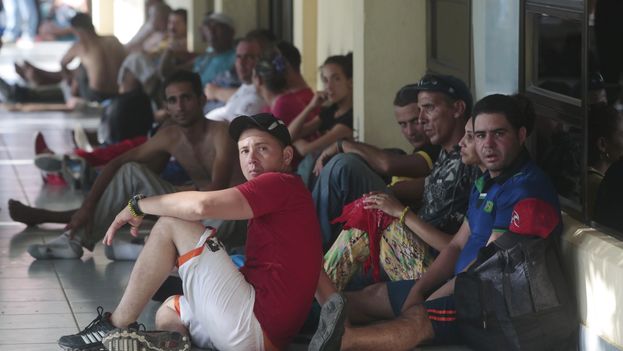
![]() 14ymedio, Chiapas, 25 January 2017 — Mexican Government authorities have reported the deportation of 70 Cuban migrants who were in the country without visas or transit permits. Among the deportees were 22 women and 48 men who were sent back to Cuba on Wednesday on a plane belonging to the Mexican Federal Police.
14ymedio, Chiapas, 25 January 2017 — Mexican Government authorities have reported the deportation of 70 Cuban migrants who were in the country without visas or transit permits. Among the deportees were 22 women and 48 men who were sent back to Cuba on Wednesday on a plane belonging to the Mexican Federal Police.
